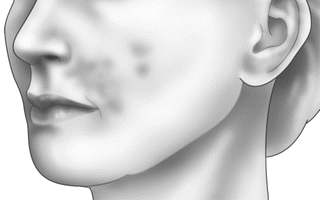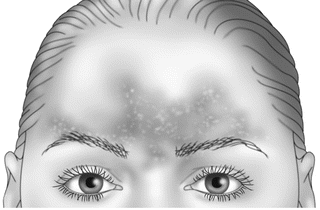, Toral Patel3, 4, Neill T. Peters3, 2 and Sarah Kasprowicz5
(1)
Northwestern University Feinberg School of Medicine, Chicago, IL, USA
(2)
Medical Dermatology Associates of Chicago, Chicago, IL, USA
(3)
Instructor of Clinical Dermatology, Northwestern University Feinberg School of Medicine, Chicago, IL, USA
(4)
D&A Dermatology, Chicago, IL, USA
(5)
NorthShore University HealthSystem, University of Chicago, Pritzker School of Medicine, Chicago, IL, USA
Keywords
Seborrheic dermatitisTea tree oilHoneySulfurSalicylic acidIntroduction
Seborrheic dermatitis (SD) is characterized by a scaly, inflammatory reaction pattern in typically oily areas of the face, scalp, and occasionally chest. Although not completely understood, the pathophysiology is intimately linked with the common skin commensal yeast Malassezia. An overgrowth of this yeast, and/or an overzealous immune response to it appears to lie at the heart of this chronic intermittent eruption (Pedrosa et al. 2014).
Fittingly, there are two major categories of conventional treatments available to address SD: those which calm the aberrant immune response, including topical corticosteroids; and those which putatively decrease the Malassezia on the skin, including a number of anti-yeast agents. Several of the alternative therapies discussed below appear to have features of both of these categories, and are often used alongside conventional agents with good effect (Dessinioti and Katsambas 2013). Of note, SD is intimately related to scalp psoriasis and can be difficult to distinguish; one paper below is from the scalp psoriasis literature, but seems broadly applicable to the matter at hand.
Seborrheic dermatitis is a perfect example of a condition in which seemingly benign home remedies can worsen the condition rather than improve it. Many individuals with seborrheic dermatitis assume they have “dry scalp,” and, in an effort to ameliorate the dryness, will apply olive oil or other oils to the affected areas. The saturated fats found in these oils provide a rich growth medium for Malassezia, and proliferation of this yeast can cause worsening of seborrheic dermatitis. In addition, olive oil (as compared to other natural oils such as sunflower oil) has actually been shown to damage the skin barrier instead of repairing it (Danby et al. 2013). Thus, patients should be advised not to apply plant oils such as olive oil to the areas (Siegried and Glenn 2012). It has been suggested that an inorganic oil such as mineral oil may be a better alternative if patients insist on the application of oil for this condition.
Clinical Considerations
Top Considerations
See Table 14.1.
Table 14.1.
Top considerations.
Treatment | How administered | Notes |
|---|---|---|
Tea tree | Topically (shampoo) | Appears to be effective; Patients should be warned of risk of contact dermatitis |
Honey | Topically (diluted) | Very gentle and inexpensive; May be difficult to apply due to consistency |
Sulfur preparations | Topically (either as monotherapy or in combination with sodium sulfacetamide) | Well-tolerated and multiple preparations available; Avoid or use with caution in patients with sulfa allergy. Some patients may not be able to tolerate due to smell |
Salicylic acid preparations | Topically (shampoo) | Inexpensive and well-tolerated; Avoid or use with caution in patients with salicylate allergy, can be irritating |
Stay updated, free articles. Join our Telegram channel

Full access? Get Clinical Tree










